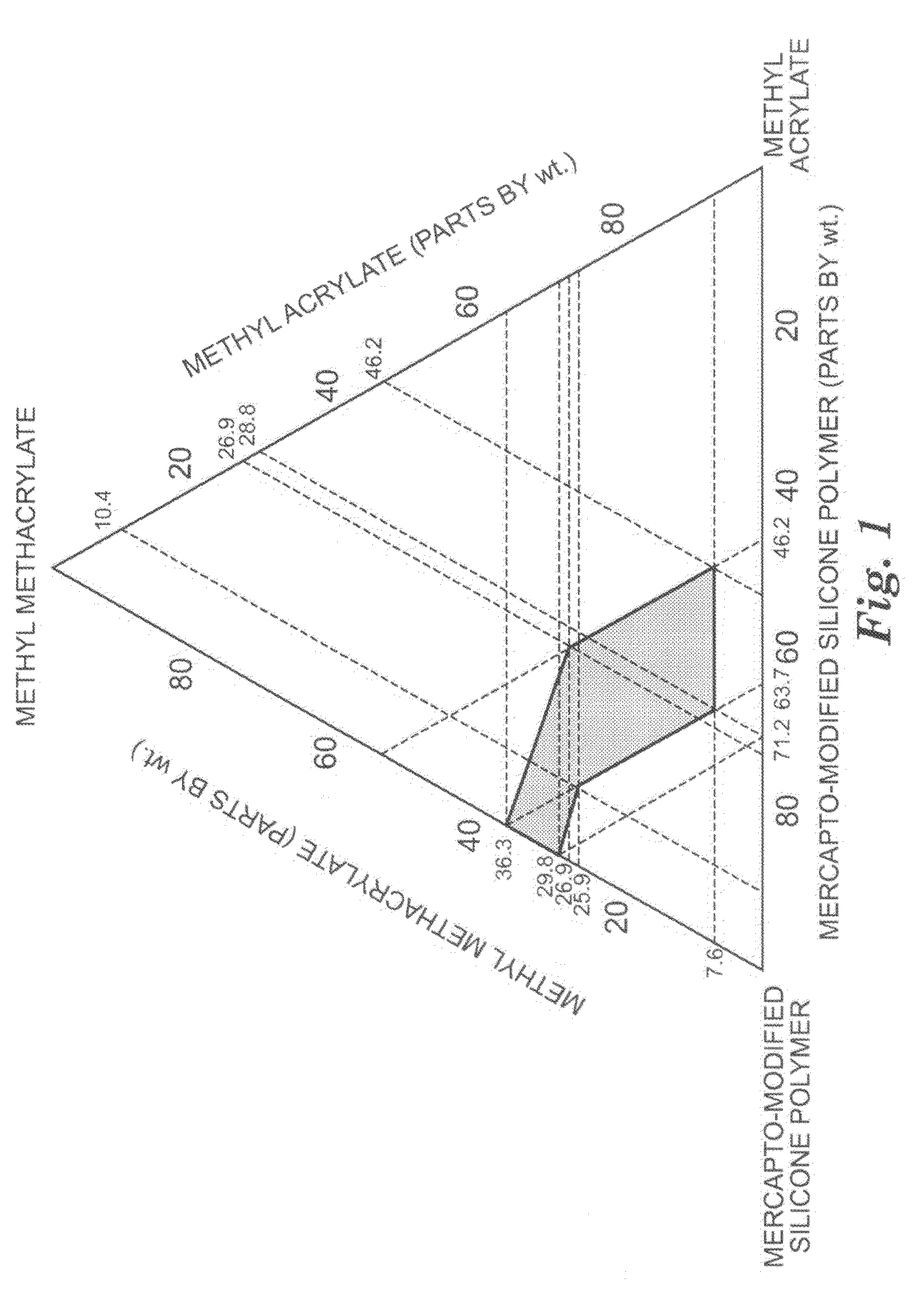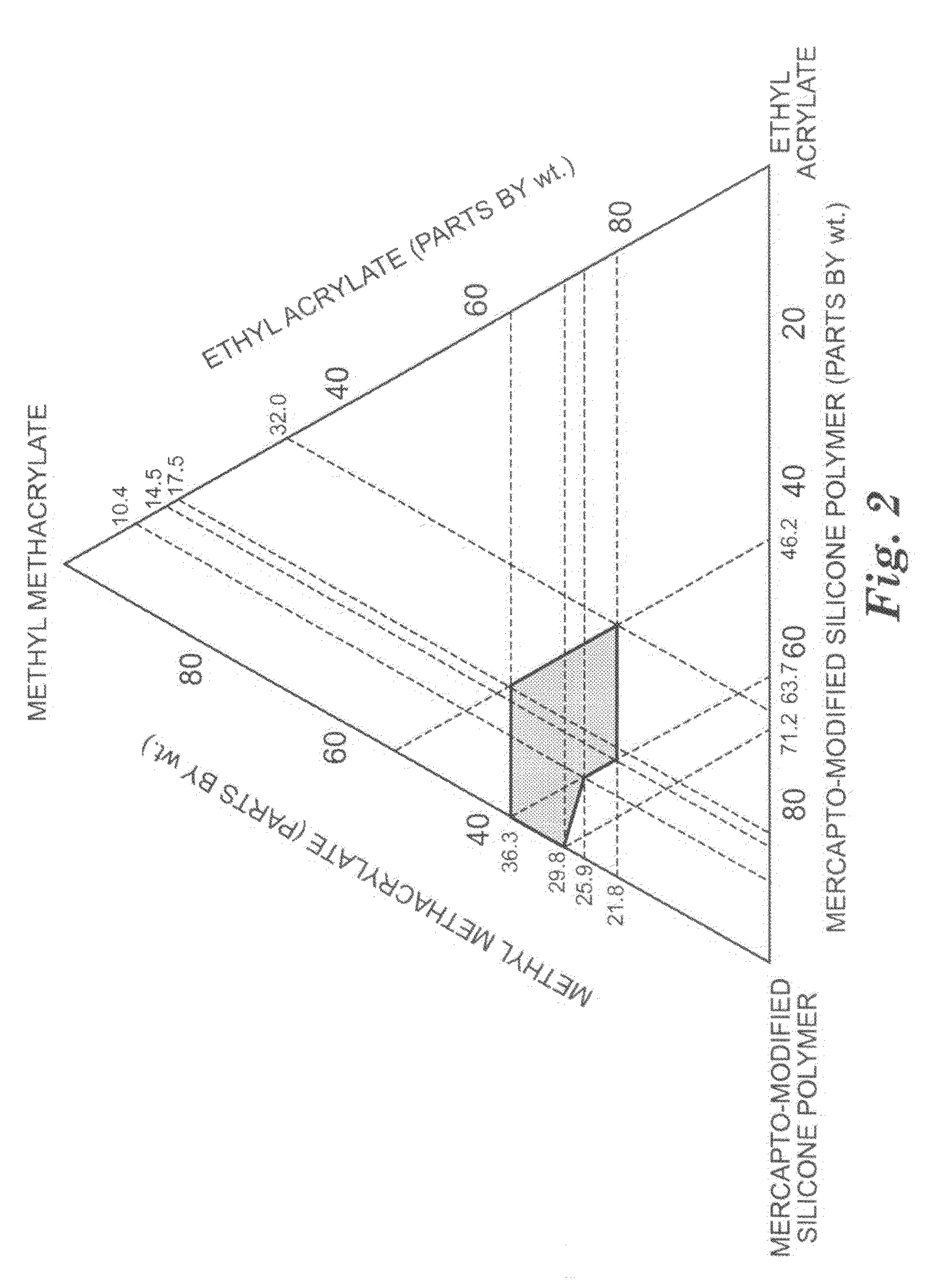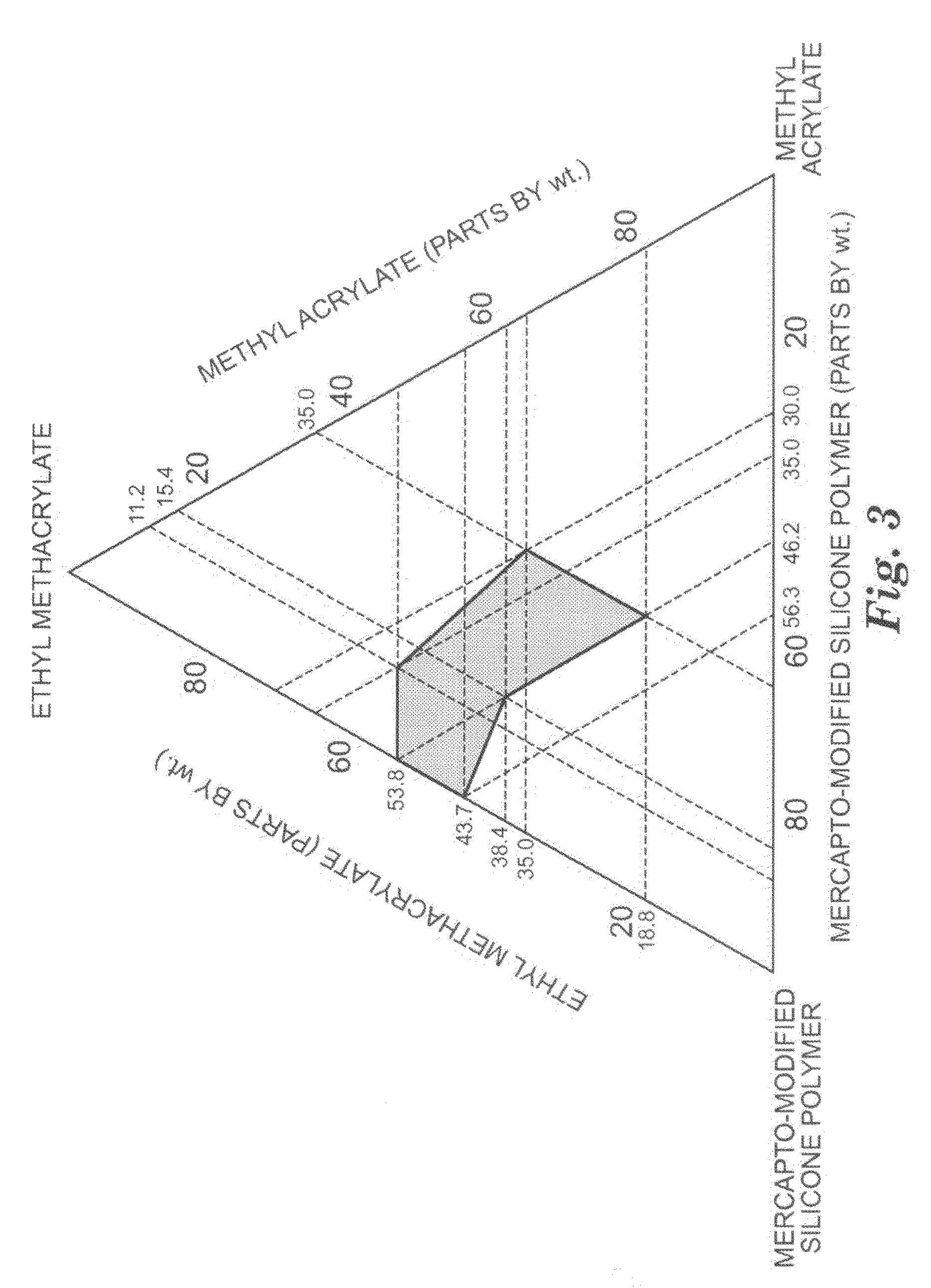Grafted silicone polymer and products made therewith
a silicone polymer and silicone technology, applied in the field of grafted silicone polymers and to products, can solve the problems of not having long-term durability, affecting the appearance of skin, and causing more serious inflammation, so as to reduce skin stickiness, reduce the risk of skin irritation, and increase the freedom of cosmetic formulation
- Summary
- Abstract
- Description
- Claims
- Application Information
AI Technical Summary
Benefits of technology
Problems solved by technology
Method used
Image
Examples
example 1
[0071]After loading 67.5 parts by weight of mercapto-modified dimethylpolysiloxane (“KF-2001” by Shin-Etsu Chemical Co., Ltd., mercaptopropylmethylsiloxane units: 4 mol %, weight-average molecular weight: 20,000), 32.5 parts by weight of methyl methacrylate, 0.6 part by weight of dimethyl 2,2′-azobis(2-methylpropionate) and 102.4 parts by weight of methyl ethyl ketone (MEK) in a 225 mL glass bottle to a total of 162.4 g, the mixture was bubbled for 10 minutes with nitrogen gas. The vessel was then sealed and polymerization was conducted while stirring in a thermostatic bath at 65° C. After 24 hours, the vessel was removed from the thermostatic bath and cooled to room temperature. The polymerization solution was added dropwise to water while stirring, and the precipitate was recovered. The precipitate was dried at room temperature to obtain a grafted silicone polymer.
example 2
[0072]In a 225 mL glass bottle there were loaded 60 parts by weight of the aforementioned mercapto-modified dimethylpolysiloxane “KF-2001”, 28.56 parts by weight of methyl methacrylate, 11.44 parts by weight of methyl acrylate, 0.6 part by weight of 2,2′-azobis(2-methylbutyronitrile) and 100 parts by weight of MEK to a total of 160.48 g, and the procedure was carried out in the same manner as Example 1. The polymerization solution was added dropwise to a methanol:water 2:1 mixed solvent while stirring, and the precipitate was recovered and dried at room temperature to obtain a grafted silicone polymer.
example 3
[0073]In a 225 mL glass bottle there were loaded 60 parts by weight of the aforementioned mercapto-modified dimethylpolysiloxane “KF-2001”, 15 parts by weight of methyl methacrylate, 25 parts by weight of methyl acrylate, 0.6 part by weight of 2,2′-azobis(2-methylbutyronitrile) and 100 parts by weight of MEK to a total of 160.48 g, and the procedure was carried out in the same manner as Example 1. The polymerization solution was added dropwise to a methanol:water 2:1 mixed solvent while stirring, and the precipitate was recovered and dried at room temperature to obtain a grafted silicone polymer.
PUM
| Property | Measurement | Unit |
|---|---|---|
| Temperature | aaaaa | aaaaa |
| Temperature | aaaaa | aaaaa |
| Percent by mass | aaaaa | aaaaa |
Abstract
Description
Claims
Application Information
 Login to View More
Login to View More - R&D
- Intellectual Property
- Life Sciences
- Materials
- Tech Scout
- Unparalleled Data Quality
- Higher Quality Content
- 60% Fewer Hallucinations
Browse by: Latest US Patents, China's latest patents, Technical Efficacy Thesaurus, Application Domain, Technology Topic, Popular Technical Reports.
© 2025 PatSnap. All rights reserved.Legal|Privacy policy|Modern Slavery Act Transparency Statement|Sitemap|About US| Contact US: help@patsnap.com



